Napoleonic Wars (1796-1815) were a series of military campaigns led by Napoleon Bonaparte, a French general who became Emperor Napoleon I of France. From the late 1700’s to the early 1800’s, Napoleon conquered much of Europe and created an extensive empire. However, a number of factors, including his endless ambition and rising nationalism in the areas he conquered, finally led to his downfall. 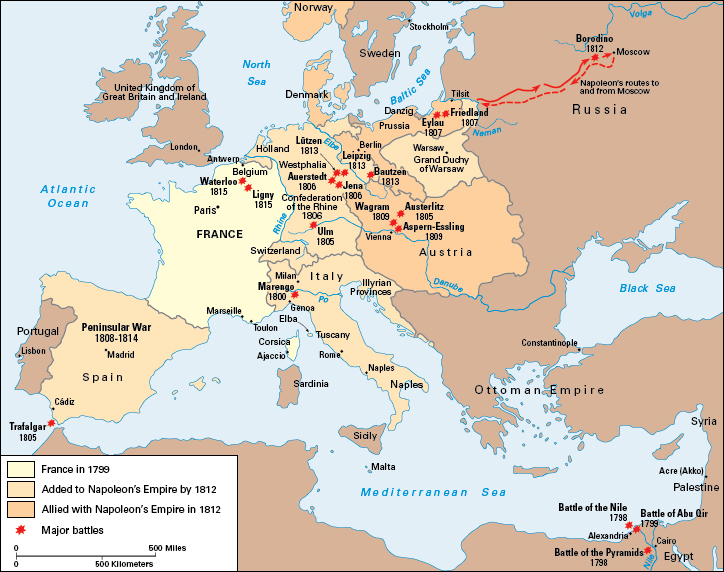
Background.
During the French Revolution (1789-1799), a series of elected legislatures took control of the French government, replacing the king. Beginning in 1792, France fought against several European nations, including Austria, Prussia, and Britain (later the United Kingdom). These nations opposed the democratic ideals of the French Revolution and wished to restore King Louis XVI to power. These conflicts, sometimes known as the French Revolutionary Wars, set the stage for Napoleon’s eventual conquest of the continent.
The Army of Italy.
In 1796, the French government, called the Directory, gave Napoleon command of a small French force that became known as the Army of Italy. The Directory sent Napoleon, then an army general, to Italy to fight against Austrian forces there. At the time, Austria’s ruling Habsburg family controlled parts of northern Italy. Napoleon’s army drove the Austrians out of northern Italy. It then marched toward Vienna, Austria’s capital, and stopped less than 100 miles (160 kilometers) away. On Oct. 17, 1797, Austria and France signed the Treaty of Campo Formio, by which France acquired Belgium and lands west of the Rhine River.
The Egyptian campaign.
In July 1798, Napoleon led an invasion of Egypt. His goal was to disrupt British trade with India and other areas, and to establish a French presence in Egypt. On July 21, his army defeated the Mamluks, Egypt’s military leaders, in the Battle of the Pyramids, near Cairo. But the French became stranded when a British fleet, commanded by Admiral Horatio Nelson, destroyed the French fleet anchored at Abu Qir Bay on August 1. The sultan of the Ottoman Empire, who ruled Egypt, then declared war on France. Napoleon’s men marched to meet the Ottomans in Syria, where they had limited success. They then retreated to Egypt and defeated an Ottoman army at Abu Qir on July 25, 1799. Soon afterward, Napoleon learned that a coalition of Austrian, British, and Russian forces had defeated a French army in Italy. Worried about the situation in Europe, he left for home in August 1799. His army remained in Egypt and surrendered to Britain in 1801. 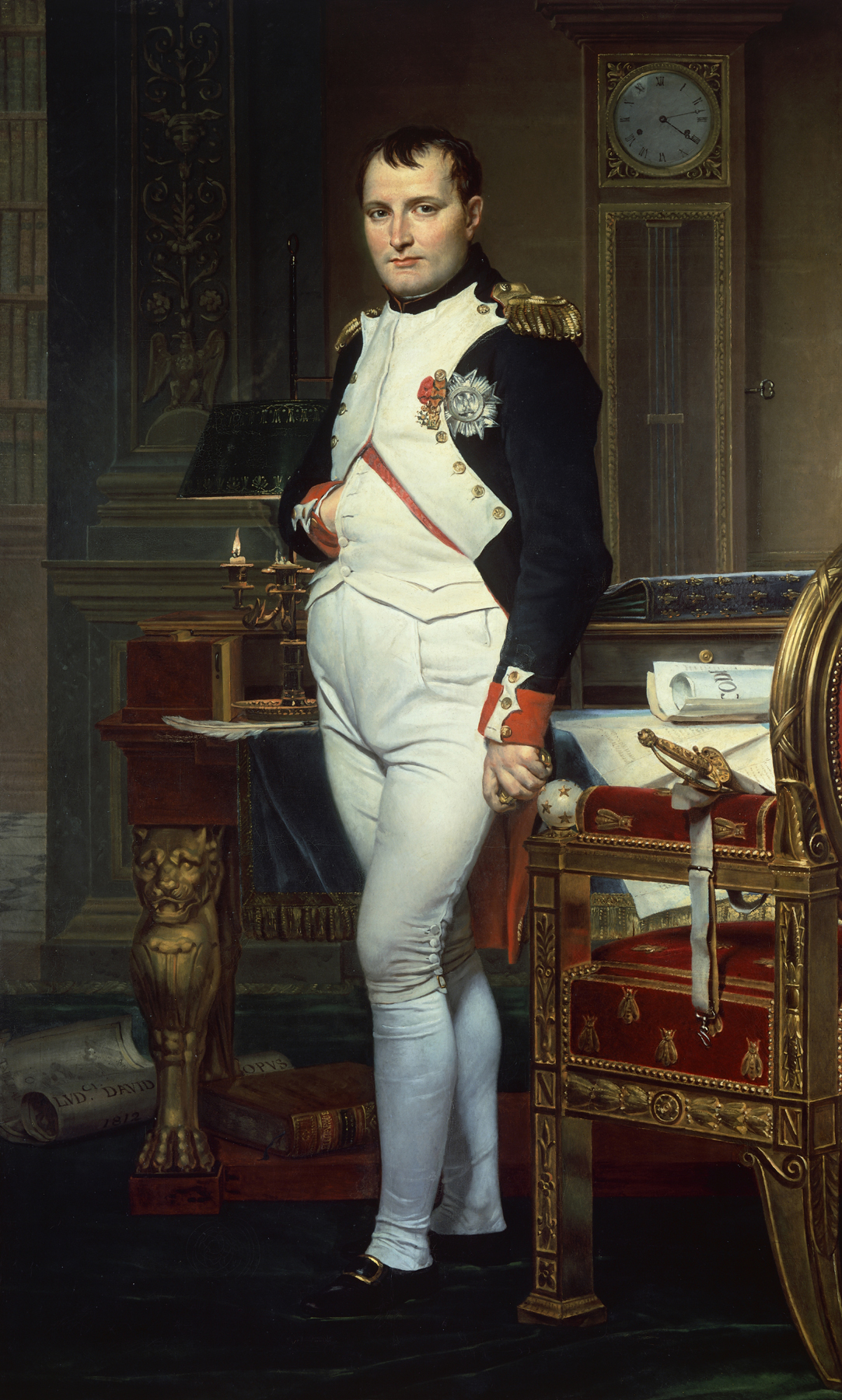
A brief peace.
On Nov. 9-10, 1799, a new government called the Consulate replaced the Directory. Napoleon was named head of the Consulate in December. In 1800, he led an army into northern Italy. On June 14, he defeated Austrian forces at Marengo. On Feb. 9, 1801, France and Austria signed the Treaty of Luneville, which reconfirmed the Treaty of Campo Formio. Britain, with no remaining allies, and France signed the Treaty of Amiens on March 25, 1802. Britain gave up the West Indies and withdrew from Egypt, and French forces left the Papal States, a territory in Italy controlled by the pope.
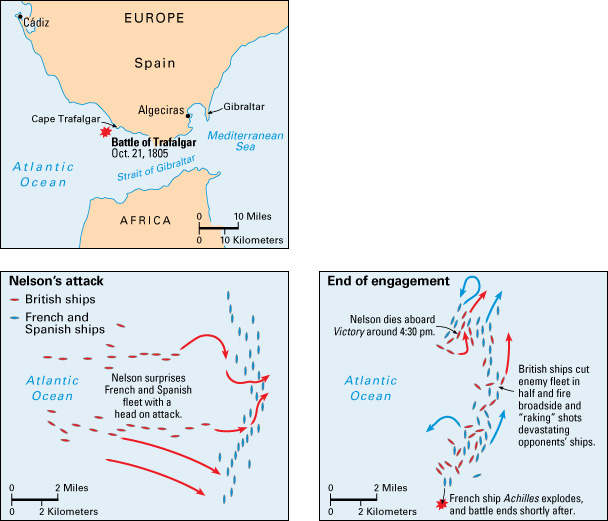
During the peace that followed the Treaty of Amiens, Napoleon continued his push to expand French power. By 1803, Napoleon had annexed the Piedmont region of northwestern Italy to France and made himself president of the Italian Republic, east of the Piedmont. His aggression angered the British. A dispute then broke out in May 1803 over Malta, an island colony that Britain refused to give up.
Renewed hostilities.
In 1803, Napoleon began preparations to invade Britain. He assembled a vast and powerful army, called the Grand Army, on the northern coast of France. Worried by Napoleon’s growing might, Austria, Britain, Russia, and Sweden formed a coalition in 1805. When Napoleon learned of this alliance, he decided to march against Austria rather than attack Britain. The Grand Army defeated the Austrians at Ulm, in present-day Germany, on Oct. 20, 1805. The next day, however, a British fleet led by Admiral Nelson defeated an allied French and Spanish fleet at the Battle of Trafalgar, off Spain’s southwest coast. Nelson died during the battle, but the British forces crippled French naval power.

On Dec. 2, 1805, the Grand Army fought Austrian and Russian forces at Austerlitz, Austria. Although outnumbered, the French were victorious. On December 26, Austria signed the Treaty of Pressburg, by which it gave territory in Italy and southern Germany to France and France’s allies. Russia refused peace terms with France.
The alliance of Prussia and Russia.
In July 1806, Napoleon created the Confederation of the Rhine, which joined the southern and western states of the former Holy Roman Empire under French control. That same summer, Prussia formed an alliance with Russia. In late September, King Frederick William III of Prussia ordered Napoleon to remove his forces from Germany. In response, Napoleon attacked Prussian troops in Germany before their Russian allies could send help. On October 14, France defeated Prussia at the Battles of Jena and Auerstedt (also spelled Auerstädt).
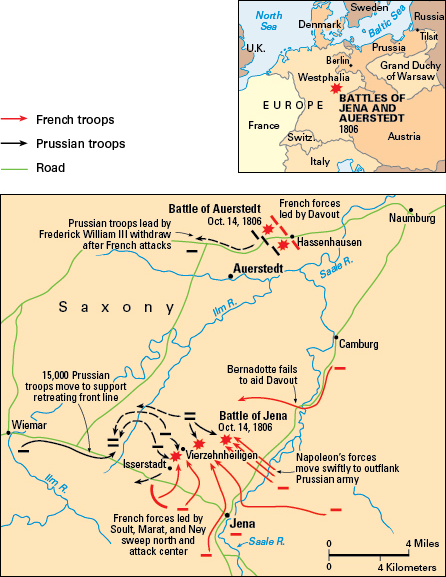
On Feb. 8, 1807, French and Russian armies fought at Eylau, East Prussia. Neither side won a clear victory. On June 14, the French defeated a Russian army at Friedland, East Prussia. Czar Alexander I of Russia then decided to make peace with France. On July 7, he and Napoleon signed the Treaty of Tilsit, in northern Prussia. The czar pledged to take economic measures against Britain, France’s enemy. On July 9, Prussia also signed a peace treaty at Tilsit and granted about one-third of its territory to Napoleon’s allies.
The Peninsular War.
France lacked the naval might to attack Britain, so Napoleon aimed to destroy the British economy. By the Berlin and Milan decrees of 1806 and 1807, he established the Continental System, which banned trade between Britain and the rest of Europe. Portugal failed to heed the ban, and Spain barely enforced it. In November 1807, French troops led by General Andoche Junot marched through Spain, which shares the Iberian Peninsula with Portugal, and occupied Lisbon, the Portuguese capital.
In May 1808, the Spanish, once France’s allies, revolted against French occupation. Napoleon proclaimed his brother Joseph king of Spain several days later. Aided by British troops, the Portuguese resisted the French as well. Napoleon then moved troops from Germany to Spain. He entered Madrid, Spain’s capital, on Dec. 4, 1808. A long and fierce war against the French followed. British, Portuguese, and Spanish troops, plus thousands of guerrilla fighters, defeated the French by 1813. By the time the French left Iberia in early 1814, over 300,000 French troops had been killed or wounded.
The Austrian war.
In April 1809, encouraged by Spanish resistance and German nationalist feeling, Austrian troops led by Archduke Charles attacked French forces in Bavaria, a Confederation state west of Austria. Napoleon retaliated by invading Austria. He captured Vienna on May 13. Two battles along the Danube River followed. On May 21-22, Napoleon’s army was repulsed at the first of these battles, the Battle of Aspern-Essling. But Napoleon defeated an Austrian army at Wagram on July 5-6. On October 14, France and Austria signed the Treaty of Schönbrunn. Austria lost much territory, including its coastline on the Adriatic Sea, to France and its allies. The treaty also forced Austria to join the Continental System.
The invasion of Russia.
The Continental System had hurt Russia’s economy. In 1810, Czar Alexander decided to resume trade with Britain. Napoleon then assembled nearly 600,000 troops to invade Russia. As French soldiers moved into Russia in the summer of 1812, hunger, fatigue, and harsh weather reduced their numbers.
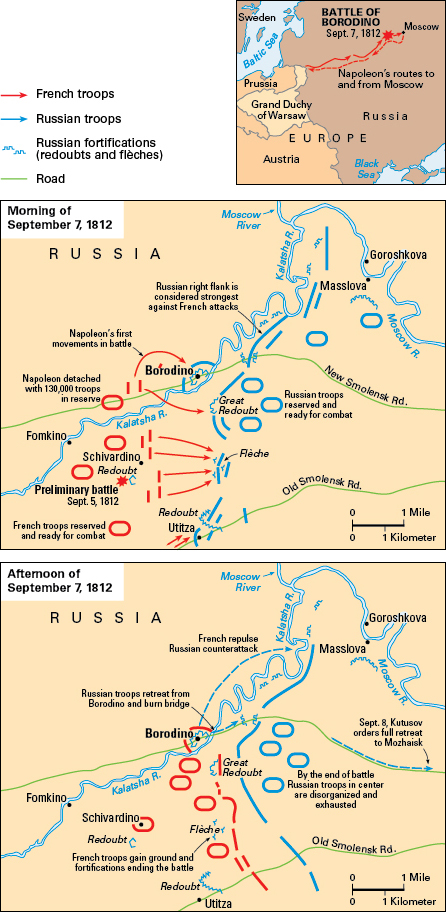
On Sept. 7, 1812, French and Russian armies fought at Borodino, near Moscow. The bloody battle resulted in a narrow French victory, and the Russians withdrew. Napoleon took control of Moscow a week later. Fires broke out in the city, probably set by retreating Russians to rob the French of shelter. Napoleon and his men stayed in Moscow for about a month, awaiting an offer of peace. But as winter neared, Napoleon realized he would have to retreat to better quarters. During the retreat, which began in October, cold and starvation killed thousands of French troops. Independent Russian horsemen called Cossacks also killed French stragglers, while Russian army units attacked the retreating French troops. Only 100,000 of Napoleon’s men survived.
Napoleon’s downfall.
Prussia and Russia formed a secret alliance in February 1813 and declared war on France in March. Napoleon scraped together a new army and attacked the allies in Germany. The French won victories at Lützen on May 2 and Bautzen on May 20-21, but the exhaustion of the French and the allies made both sides desire peace. On June 4, France and the allies signed an armistice (agreement to stop fighting). Napoleon would not agree to the terms of a peace agreement. Austria and Sweden then joined the alliance, while Britain supplied it with money.
The French army won a victory at Dresden, Germany, on Aug. 26-27, 1813, but eventually it was outnumbered. At its height, Napoleon’s army at this time totaled only 400,000 troops against the allies’ 600,000. From October 16 to 19, the two sides fought the Battle of the Nations, also called the Battle of Leipzig, at Leipzig. The French suffered heavy losses and retreated into France. The allies offered a peace settlement that Napoleon rejected, and the allies invaded France. Although Napoleon mounted a brilliant defense, the allies won control of Paris on March 31, 1814. Napoleon abdicated (gave up) his throne unconditionally at Fontainebleau on April 6, 1814. He was exiled to the island of Elba in the Mediterranean Sea. Signed May 30, 1814, the Treaty of Paris forced France to return to the territory it had occupied, with a few exceptions, on Nov. 1, 1792.
The Hundred Days.
In April 1814, the French Senate invited the brother of King Louis XVI, who had been executed during the French Revolution, to rule France. In May, he took the throne as Louis XVIII. In March 1815, Napoleon returned to France with about 1,100 supporters. Many of the troops sent to stop Napoleon joined him instead. On March 19, Louis XVIII fled. On March 20, Napoleon took over the government without violence.

Since 1814, Austrian, British, Prussian, and Russian representatives had attended the Congress of Vienna, a series of meetings called to decide how Europe should be divided and governed following Napoleon’s defeat. The congress had restored European rulers whom Napoleon had ousted. When the representatives heard of Napoleon’s return, they formed a military coalition.
Napoleon attacked the coalition armies in Belgium before they could join together. He drove back a Prussian army at Ligny, Belgium, on June 16, 1815. On June 18, he attacked an army led by the Duke of Wellington at Waterloo. Prussian troops arrived late in the battle to aid Wellington, and the combined force beat back the charges of the French. Overwhelmed, the French retreated. Napoleon then failed to gather a new army. He abdicated again on June 22 and was exiled to the South Atlantic island of St. Helena.
King Louis XVIII returned to France 100 days after he had fled. France and the allies signed the second Treaty of Paris on Nov. 20, 1815, ending the Napoleonic Wars. France had to pay indemnities (payments for war damages) and return to its borders as of 1790. In addition, thousands of allied soldiers occupied France. Napoleon died on St. Helena on May 5, 1821.
